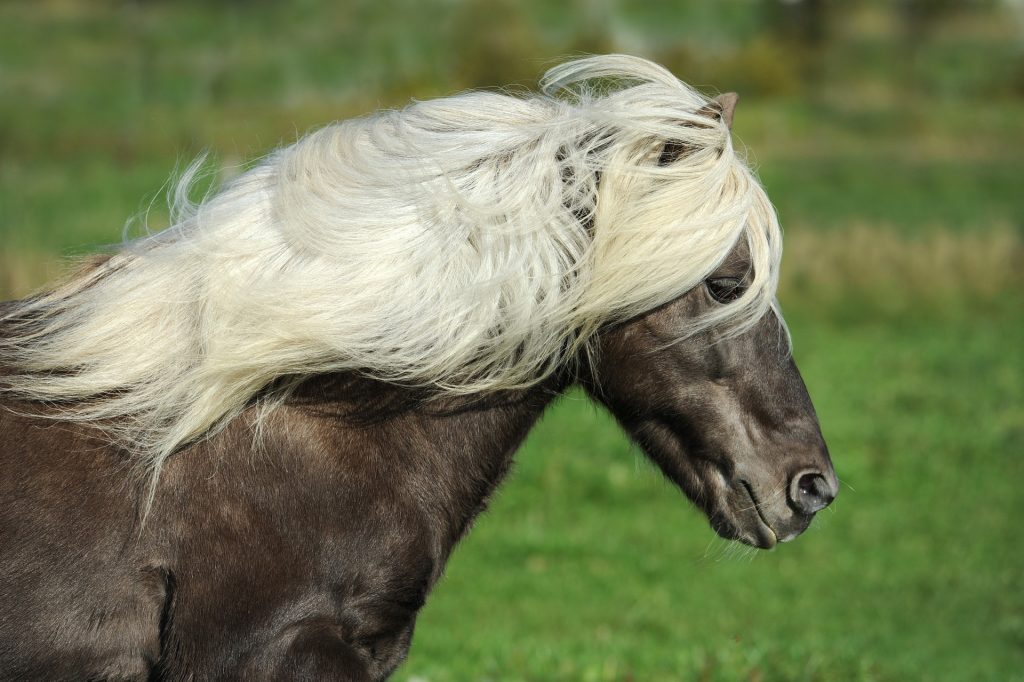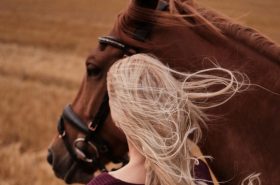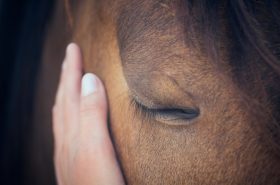Transform your horse’s damaged hair into a lush mane and tail to be proud of.
There’s nothing more picturesque than a horse galloping with the wind in their hair. A long flowing mane and tail is a dream of many horse owners. While not every horse can grow a luxurious perfect mane on their own, there are plenty of things you can do to assist. You can definitely stop breakage and add length when you tend to their hair properly. There are several simple steps you can do as part of your normal grooming routine!
Tips for Growing a Perfect Lush Mane & Tail
Nutrition
A healthy outside starts with a healthy inside! A scrappy mane can be a sign of vitamin and mineral deficiencies. Poor quality hay and grain can also impact their hair. There are supplements specifically designed for the mane and tail like SmartMane & Tail by SmartPak. It has biotin, collagen, essential amino acids like lysine, methionine, and threonine, and omega 3 fatty acids. These key ingredients support healthy hair growth!

Prevent Breakage
Make sure your horse’s environment is supportive of a healthy mane. Nails and jagged boards can catch and pull out your horse’s mane or tail. It’s a great idea to walk their field and check their stall for things that could grab hair strands like trees, bushes, and protruding nails. In some cases, another horse may be nibbing or yanking on their hair. You can use fly spray or a detangler for an icky taste, which should deter them hopefully.

Stop the Rubbing
An itchy horse can do some real damage to both their mane and tail. In the summer, sweet itch can become a real problem. Midges and fly bites can cause your horse to become extremely itchy. In severe cases, the horse can rub a bald spot in the top of their tail. These horses do well with fly sheets, special ointments, and reduced turnout during peak times. Look for bloody patches on their belly, between their legs, and by the dock of their tail.
Other horses itch because their skin is dry and flaky. First, make sure they’re clean! Mares will itch their tail on fences and in their stalls when their udder’s get dirty. A dirty sheath can do similar to geldings. On the other hand, a horse that is bathed too much can lose essentials oils and get dry skin. Strike a healthy balance!
Furthermore, pinworms and other parasites like threadworms and lice can cause a horse to experience extreme itchiness. Pinworms can make a horse itch the top of their tail out. Similarly, threadworms can cause intense itching but in the neck region. You’ll need a proper dewormer and to sanitize their stable. Be prepared these parasites can be tricky to treat!
Grooming
There is actually a proper way to tend to your horse’s mane and tail. Many people like to use brushes and pull through the knots. This can cause tons of breakage and hair loss! Instead, keep their mane conditioned and even braided to prevent knots. If they do get one, then use your fingers to gently pick through it. The professionals will tell you to never use a brush! Products that are silicon-based contain alcohol, which can be extremely drying. Alternatively, use something like a leave-in conditioner or coconut oil. A gentle shampoo is all you need for wash day!
Blanketing
Blankets can cause rubbing in the mane and tail areas. Always check the fit of your blanket! One too small or too big will increase the amount of rubbing. You can also find blankets without a tail flap and cutback withers.
Hair doesn’t grow overnight, so you’ll need to be in this for the long haul. It takes times and energy to have a horse with a lush mane and tail, but the end results are worth it!



